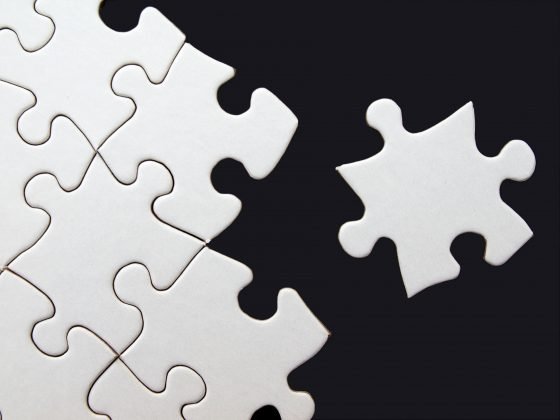Artists produce a vast quantity of work over the course of their career and lifetime, however in most cases they do not make precise plans about their artwork and its legacy. Creative characters generally give very little consideration to how a proper estate planning can affect the value and the marketability of a single piece of art or an entire art collection thought their own lives. Some only reflect on this important aspect of their careers much later, yet a properly managed estate can benefit long after an artist’s death to support either their heirs or causes that were important to them during their lifetime.
Initial steps
First, it is crucial to create an “artwork inventory” which includes art at home and in the artist studio, as well as in storage areas, galleries, and on display at outside locations. This must include all work that an artist has ever produced, also including work owned by collectors, so it will be relatively easy to locate it in the future in case of a retrospective being set up. Opportunities and decisions must take into account whether to prepare or update a “catalogue raisonné”, basically a full listing of the artist’s works. Usually this will be prepared by either the artist’s heirs or the leading academic or market expert on the artist. If the catalogue becomes accepted and respected, it becomes the ultimate arbiter on the value of the artist’s works.
Timing is key, as forgers may submit a series of artworks before the catalogue is finalised. Thus, it might be necessary to appoint an authentication body or a foundation to consider and determine the authenticity of the submitted artworks.
Unforeseen circumstances and the composition of the estate
Assigning a power of attorney is also advisable as – in the unlikely event that the artist becomes incapacitated and unable to make decisions regarding the estate – he/she needs to assign a power of attorney. The wisest choice would be to select the most trusted person to make life and/or professional decisions. Often, people prepare for when they pass away but do not plan for situations where they need someone to be a proxy voice during an incapacity condition.
Artists often amass a collection of artwork by other artists, friends, and colleagues. You should treat this collection with the same professionalism as your own work. Archive this work, maintain accurate records, and have a plan in place for this work should something happen to you at a later date. Keeping all records related to the artist career – including notes, show reviews, photographs, invoices, personal journals, and correspondences from artists, friends, dealers, and collectors – is of utmost importance.
Moreover, it is critical to make sure the executor of the Will is aware of where all materials and artworks are stored, and how to find complete contact information of dealers, representatives, and agents. The executor should also receive precise instructions about how to handle tasks and working relationships with different people. One of the major considerations for the artist is about the ability and the experience of the chosen executor to successfully achieve such goals.
Considering the artist’s wishes and administration of art estates
Clearly stating the artist wishes is another challenge, not only with the chosen executor of the artist Will, but also with heirs, dealers, agents, and representatives who will be receiving, administering and/or working with the artist estate. Precise instructions ought to be set up about the way the estate is to be divided among family members, institutions, galleries, and other relevant parties. Everyone must understand what they are going to get and, if necessary, why they are getting it.
Donations can be inserted in a Will and specify precise ways the artist wishes to give away part of the estate – e.g. particular artworks to designated people or institutions, mass donations to museums or foundations, proceeds taken from the sale of artworks, etc. Most donations in Hong Kong have a charitable meaning, since donations linked to tax reasons are not common as the territory does not have a capital gains or estate duty tax, contrary to what happens in other jurisdictions – e.g. the USA or the UK.
Generally, there are two administrative models in administering an artist estate:
- “Private”, with a clear and deep involvement of the artist’s heirs. This is what historically has been the most common method to administer an artist estate.
- “Institutional”, through a specifically created legal entity. This method also offers more tools in case the artist wishes to set the entire or part of the estate for public benefit. In recent years there’s been a tremendous growth of other possible administrators unrelated to heirs or the artist family, which include art lawyers, art dealers and galleries, auction houses, museums and public archives, and service providers specialising in art estates.
Methods of administering an estate might also vary depending on the length of time chosen by the artist:
- The “sunset model” anticipates the termination of the estate at the time when all the goals which the artist had initially set have been achieved and exhausted.
- The “eternity model” is common practice when a separate legal entity has been created and operates indefinitely, especially with the scope of growing the monetary value of the estate and/or investing in new artistic projects
Setting up Trusts
If the deceased person left both a Will and a living Trust, as many artists often do, it is necessary to work closely with the counterpart who oversees the Trust assets, the successor trustee. A living Trust is somewhat similar to a Will which lets someone leave property to named beneficiaries. The main difference is that Trust property doesn’t have to go through the probate process before it can be turned over to the people who inherit it.
Most frequently, artworks forming part of the assets of a Trust contain a well-established family art collection, with the Trust itself having been established to protect and preserve that art collection for the enjoyment of future generations. However, in many situations nowadays, trustees may be required by the terms of the Trust deed to do more than merely hold and protect family artworks: trustees may have duties to actively build an art collection for the benefit of the beneficiaries of the trust, they may be asked to manage artworks for charitable purposes, or they may find themselves appointed as trustee of a Trust, established with the goal to invest in an upcoming artist in order to fund and promote additional works.
The Trust deeds can be tailored to give the settlor a bigger participation in the succession planning process, and to cautiously propose measures for the management of the precise categories of artworks settled on the Trust. Essentially, including artworks in a Trust can also allow for a stronger and simpler administration and management process: provisions can be made so that the trustee can delegate tasks to experts or curators who can arrange for issues involving transportation, insurance, storage, and display or exhibition of the artworks.
While it may sound like a very complicated process – if planned properly – estate planning for artists is a great opportunity to realize artistic, business, family, legacy and philanthropic goals after years of hard work and sacrifice.
Our team at Hugill & Ip has extensive experience in dealing with Art Law, Wealth Planning and Private Client issues – so if you need further advice on these subjects, please get in touch with us.
This article is for information purposes only. Its contents do not constitute legal advice and readers should not regard this article as a substitute for detailed advice in individual instances.




